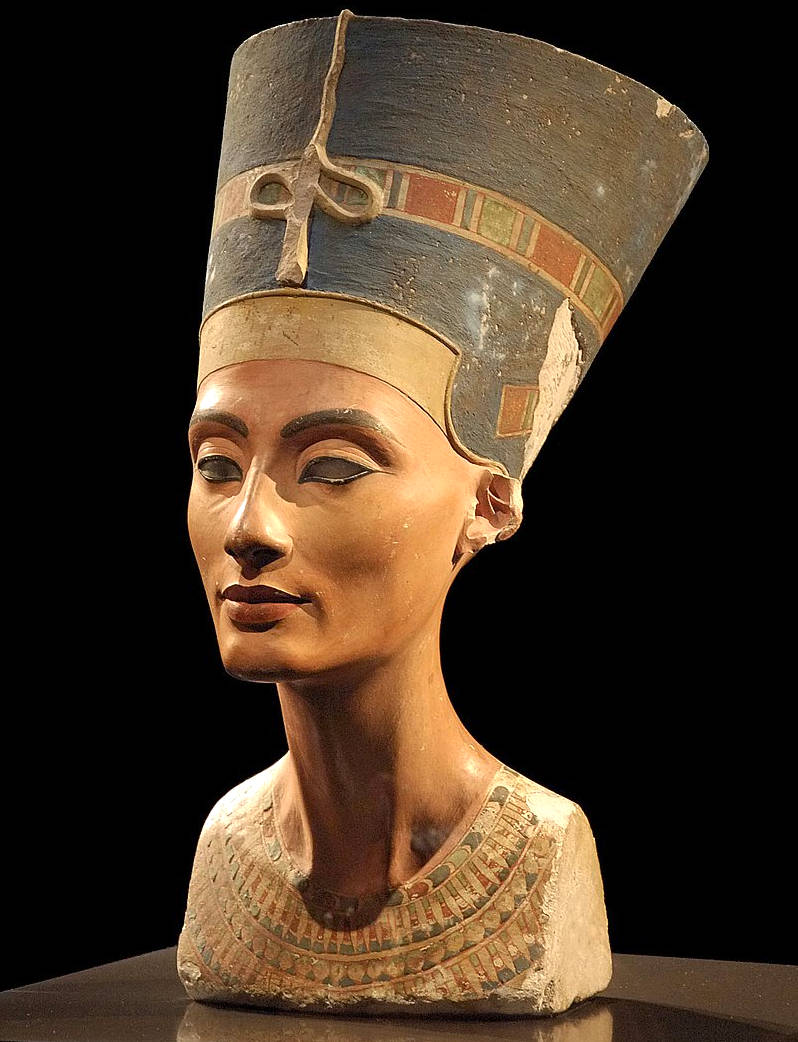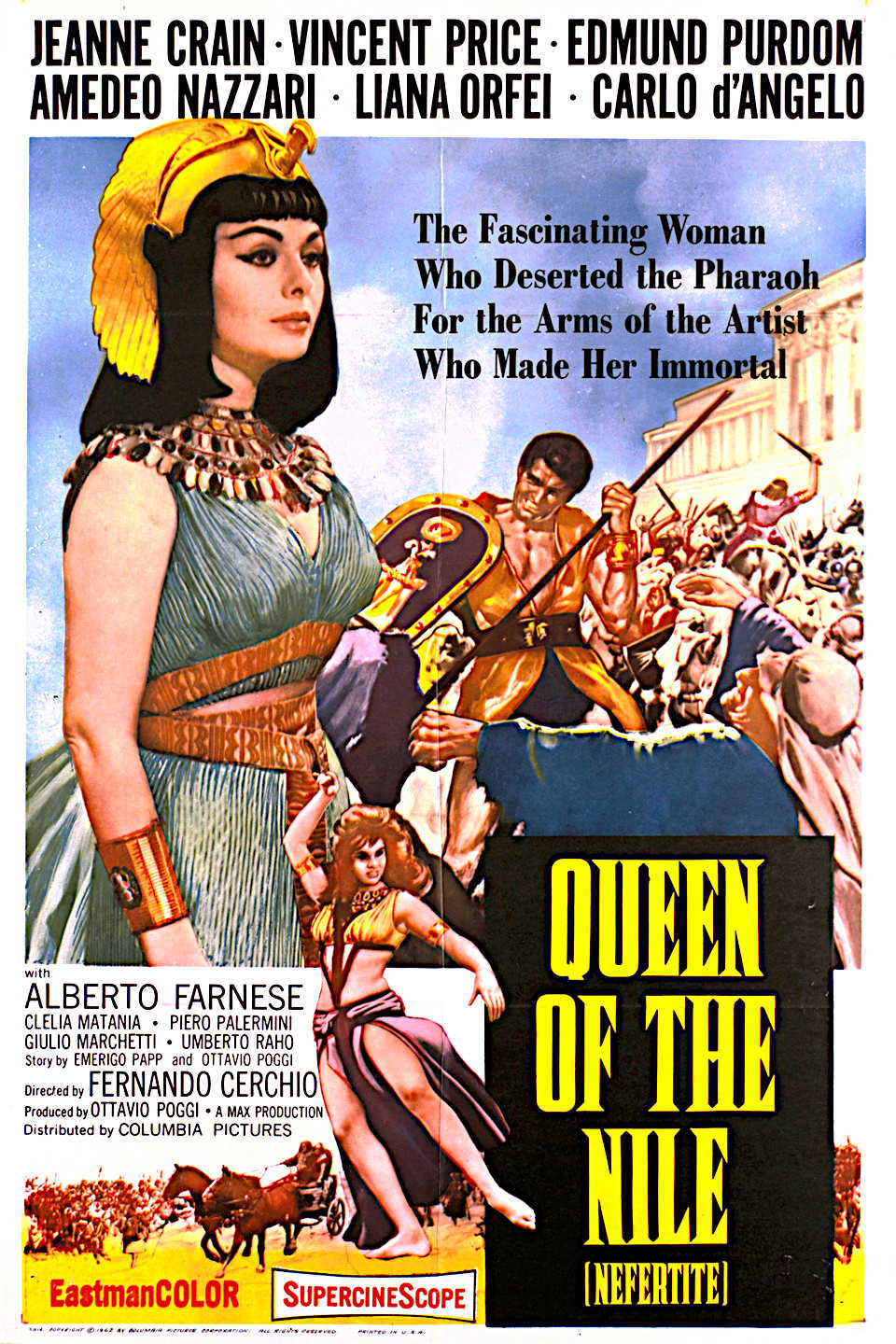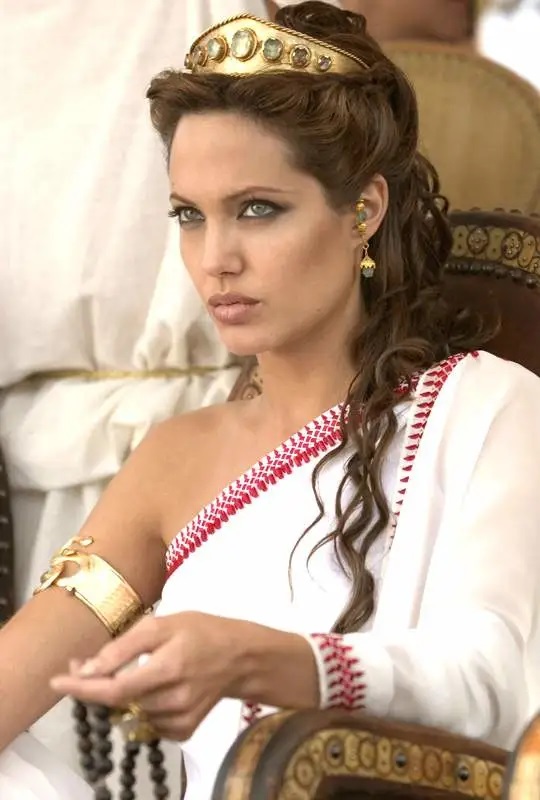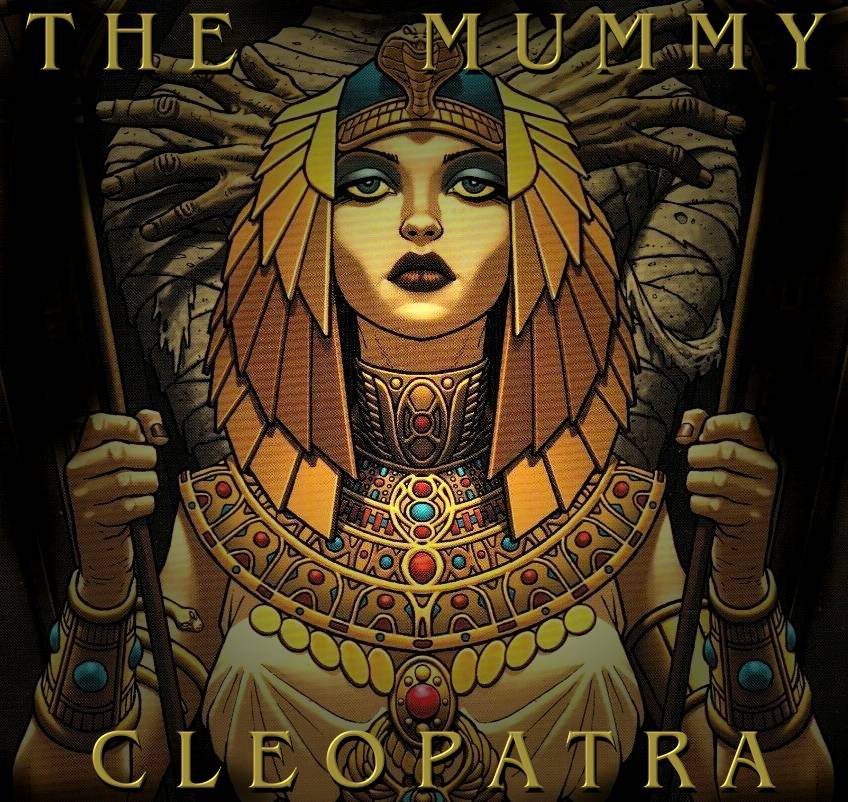
Nefertiti
bust
Neferneferuaten Nefertiti (c. 1370 – c. 1330 BC) was a queen of the 18th Dynasty of
Ancient
Egypt, the great royal wife of Pharaoh Akhenaten. Nefertiti and her husband were known for a religious revolution, in which they worshipped one god only, Aten, or the sun disc. With her husband, she reigned at what was arguably the wealthiest period of ancient Egyptian history. Some scholars believe that Nefertiti ruled briefly as Neferneferuaten after her husband's death and before the ascension of
Tutankhamun, although this identification is a matter of ongoing debate. If Nefertiti did rule as Pharaoh, her reign was marked by the fall of Amarna and relocation of the capital back to the traditional city of Thebes.
She was made famous by her bust, now in Berlin's Neues Museum. The bust is one of the most copied works of ancient Egypt. It was attributed to the sculptor Thutmose, and it was found in his workshop.
The
bust was the subject of a film from 1961: "Queen
of the Nile," starring Jeanne Crain as the queen in
love with the artist who sculpted her bust.
ROYAL ROLE
Many scholars believe Nefertiti had a role elevated from that of great royal wife, and was promoted to co-regent by her husband Pharaoh Akhenaten before his death. She is depicted in many archaeological sites as equal in stature to a King, smiting Egypt's enemies, riding a chariot, and worshipping the
Aten in the manner of a pharaoh. When Nefertiti's name disappears from historical records, it is replaced by that of a co-regent named Neferneferuaten, who became a female Pharaoh. It seems likely that Nefertiti, in a similar fashion to the previous female Pharaoh Hatshepsut, assumed the kingship under the name Pharaoh Neferneferuaten after her husband's death. It is also possible that, in a similar fashion to
Hatshepsut, Nefertiti disguised herself as a male and assumed the male alter-ego of Smenkhkare; in this instance she could have elevated her daughter Meritaten to the role of great royal wife.
If Nefertiti did rule Egypt as Pharaoh, it has been theorized that she would have attempted damage control and may have re-instated the ancient Egyptian religion and the Amun priests, and had Tutankhamun raised in with the traditional gods.
Archaeologist and Egyptologist Dr. Zahi Hawass theorized that Nefertiti returned to Thebes from Amarna to rule as Pharaoh, based on ushabti and other feminine evidence of a female pharaoh found in Tutankhamun's tomb, as well as evidence of Nefertiti smiting Egypt's enemies which was a duty reserved to kings.

BURIAL & KV21B MUMMY
Nefertiti's burial was intended to be made within the Royal Tomb as laid out in the Boundary Stelae. It is possible that the unfinished annex of the Royal Tomb was intended for her use. However, given that Akhenaten appears to have predeceased her it is highly unlikely she was ever buried there. One shabti is known to have been made for her. The unfinished Tomb 29, which would have been of very similar dimensions to the Royal Tomb had it been finished, is the most likely candidate for a tomb begun for Nefertiti's exclusive use. Given that it lacks a burial chamber, she was not interred there either.
In 2015, English archaeologist Nicholas Reeves announced that high resolution scans revealed voids behind the walls of Tutankhamun's tomb which he proposed to be the burial chamber of Nefertiti, but subsequent radar scans showed that there are no hidden chambers.
In 1898, French archeologist Victor Loret found two female mummies among those cached inside the tomb of Amenhotep II in KV35 in the Valley of the Kings. These two
mummies, known as 'The Elder Lady' and 'The Younger Lady', were identified as likely candidates of her remains.
An article in KMT magazine in 2001 suggested that the Elder Lady might be Nefertiti. However, it was subsequently shown that the 'Elder Lady' is in fact Tiye, mother of Akhenaten. A lock of hair found in a coffinette bearing an inscription naming Queen Tiye proved a near perfect match to the hair of the 'Elder Lady'.
DNA analysis confirmed that she was the daughter of Tiye's parents Yuya and Thuya.
On 9 June 2003 archaeologist Joann Fletcher, a specialist in ancient hair from the University of York in England, announced that Nefertiti's mummy may have been the Younger Lady. This theory was criticised by
Zahi Hawass and several other Egyptologists. In a subsequent research project led by Hawass, the mummy was put through CT scan analysis and DNA analysis. Researchers concluded that she is
Tutankhamun's biological mother, an unnamed daughter of Amenhotep III and Tiye, not Nefertiti.
One of the two female mummies found in KV21 has been suggested as the body of Nefertiti.
DNA analysis did not yield enough data to make a definitive identification but confirmed she was a member of the Eighteenth Dynasty royal line. CT-scanning revealed she was about 45 at the time of her death; her left arm had been bent over her chest in the 'queenly' pose. The possible identification is based on her association with the mummy tentatively identified as Ankhesenamun. It is suggested that just as a mother and daughter (Tiye and the Younger Lady) were found lying together in KV35, the same was true of these
mummies.
OTHER NOTABLE QUEENS
Hatshepsut
Sobekneferu
(Neferusobek)
Nefertiti,
beautiful ancient Egyptian queen, architect of the sun cult
Cleopatra
last queen of Egypt
Amina, queen for 34 years in Nigeria
Candace,
Ethiopian Empress, fearsome fighter who resisted Alexander the
Great
Semiramis,
female ruler Assyrian empire.
NOTABLE KINGS
Djoser
Khufu
Khafre
Ahmose
Amenhotp I
Thutmose I, II, III
Ramesses I, II III, VI, VIII, IX, X, XI
Amenhotep II
Akhenaten
Tutankamun
Seti I & II
Alexander the Great
Ptolemy I Soter I
Ptolemy IV Philopator
Ptolemy VI Philometor
Ptolemy IX Soter II

REFERENCE
https://www.stylist.co.uk/opinion/cleopatra-lady-gaga-angelina-jolie-whitewashing-elizabeth-taylor-debate-diversity-representation/245816

CLEOPATRA
THE MUMMY - UNDER DEVELOPMENT
'Cleopatra
- The Mummy' is an original story in the John Storm franchise (for which a
draft
script is published for studios, producers and directors). The
John Storm
franchise is a series of
ocean awareness adventures, featuring the incredible solar
powered trimaran: Elizabeth
Swann. Dubbed the Queen
of the Nile.